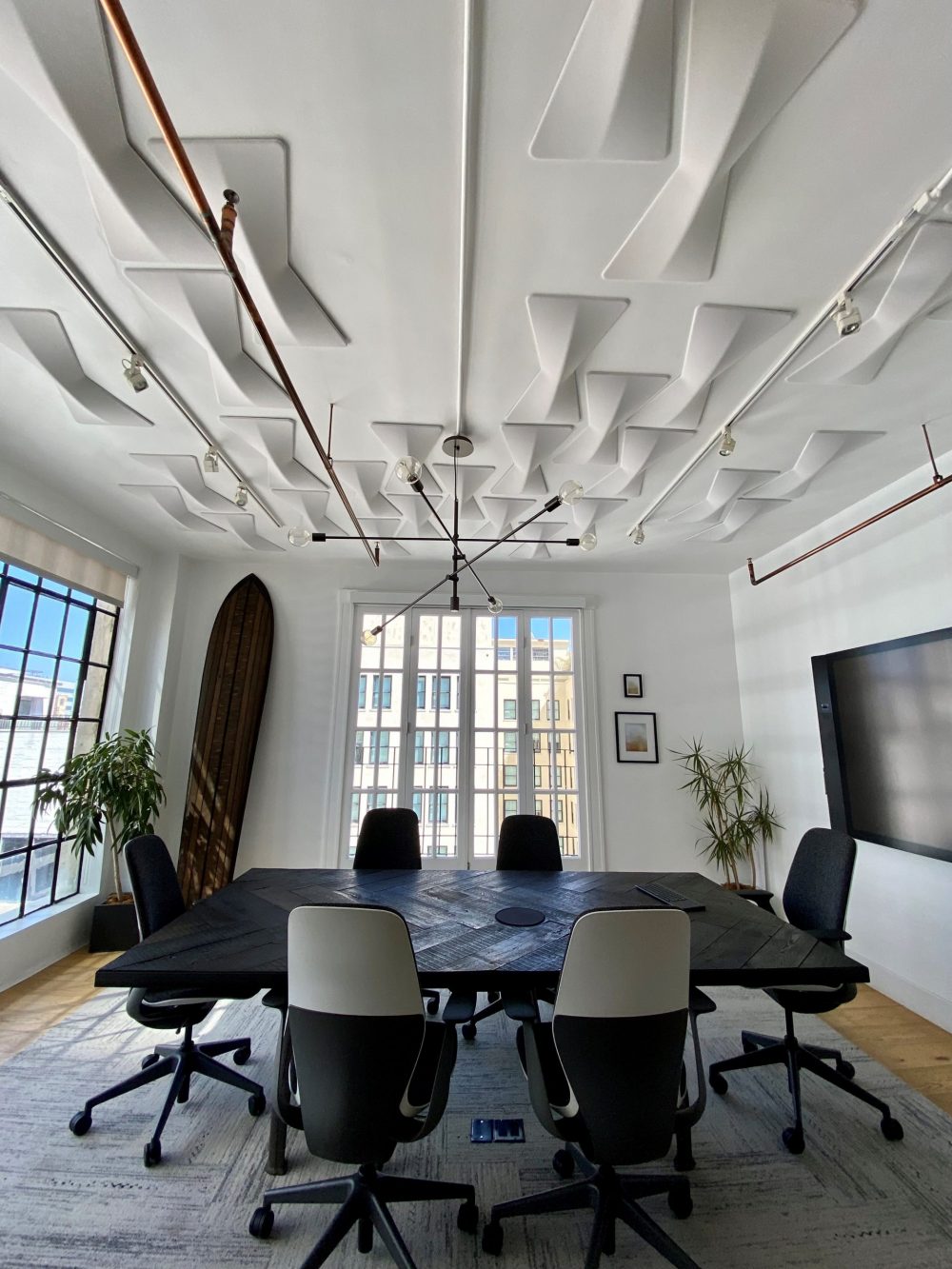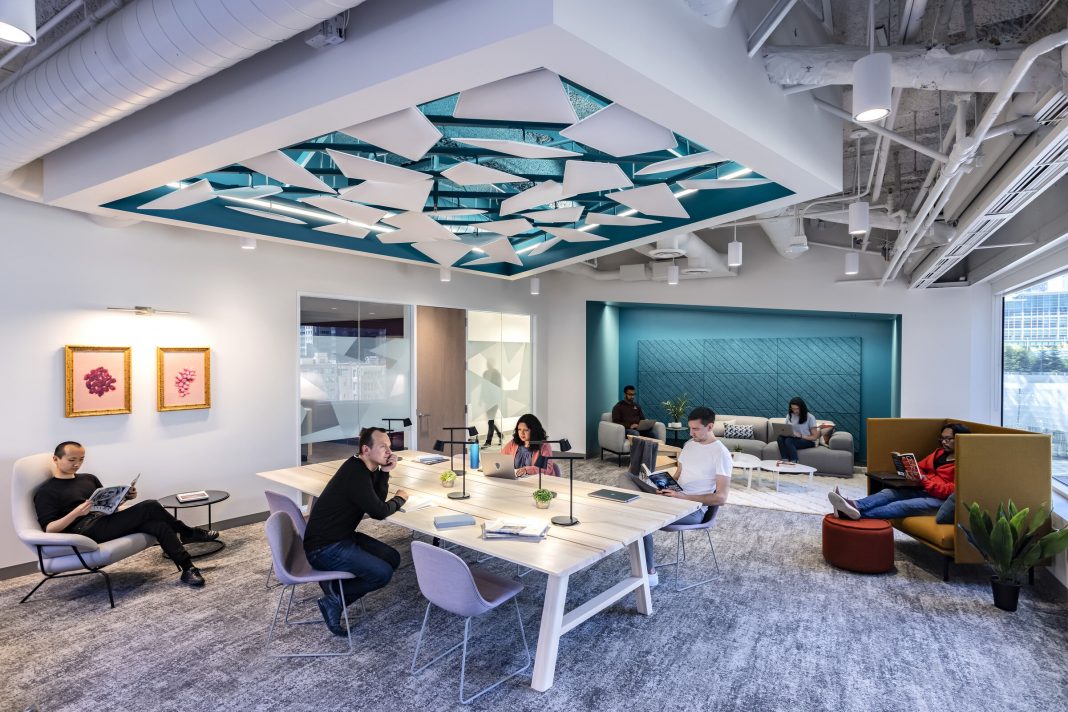Steve Johnson shares how acoustics can underpin a strategy to get employees agreeably back to the office.
There are those that want to stay at home forever and those that want to be back at the office every day. There is also are a variety of employers in-between the two extremes that want to have their employees come back to the office in some mix of days and get a positive, productive experience that benefits the enterprise.
Travel in time with me back to the pre-pandemic workplace. Everything was peaceful, open plan was appreciated, no one needed a private office. Focus, engagement and satisfaction were all off the charts…Right?
Of course not. It was a time where density was nose to nose and elbow to elbow. Separation whether with walls, panels or distance was often non-existent.
Well, if the work-from-home response to the pandemic did anything, it cut down on the raging, red-faced anger of “I hate open plan” for a little while.
Productivity = Comfort + Focus + Collaboration
Back to the current, there is a new appreciation among many that they could focus while working at home. Some with kids and dogs may disagree. But it maters that people found value in the ability to focus with less distraction.
The realities of commercial office space don’t allow a private home office equivalent for most companies and it would likely undermine some of the goals of increased interaction within teams and business units. That doesn’t mean that there are not ways that some of the comfortable focus can’t be replicated.
Workplace acoustics can underpin a strategy to get employees agreeably back into the fold.
A non-auditable and un-verifiable formula might be: Productivity = Comfort + Focus + Collaboration where Collaboration does not undermine Comfort or Focus.

Increase the Radius of Distraction to Allow Focus
Focus areas should be designed to allow heads down work without powerful distraction. This means space between workstations. With or without panels, the radius of distraction in most modern space is about 60 feet. Obviously, we can’t space people that far apart even with highly motivated landlords. By adding sound masking and good acoustical absorptive materials the radius can shrink down to 10-15 feet. Sound masking covers the content of speech and makes it hard to understand. As the speech becomes less articulate, it becomes harder to understand and much less distracting. A good high NRC ceiling and strategically placed wall panels or dividers will make the space comfortable. Discreet interactions are well controlled with the combination of sound masking and absorptive materials. Animated conversations should be located away from focus areas.
Collaboration Should Not Undermine Focus
Collaborative areas should be loaded up with acoustically absorptive materials. The more sound that is captured in proximity to the conversation, the less will transfer to neighboring areas. Hard ceilings, glass and sheetrock surfaces should be covered or not used. Line of sight to neighboring areas should be obstructed by a wall. Within the room, absorptive materials will reduce reflective sound and will then allow multiple conversations to take place without having the volume ratchet up like a crowded bar.
Corridors that connect collaborative areas to focus areas should always be treated with acoustical materials to avoid the megaphone effect of reflective sound. Acoustical ceilings are a good start but absorptive materials on the walls are critical to high performance.
Workplace Acoustics in Meeting Rooms to Improve Function
Meeting rooms should be constructed with walls to ceiling. If the space is open to structure, a high CAC ceiling should be built over all meeting rooms. There is no getting around the physics on this one. It is a recipe for disappointment to leave meeting rooms or offices with open ceilings. In addition to an acoustical ceiling, meeting rooms should also have at least one wall that has significant acoustical materials. This benefits the users in multiple ways. The conditions within the rooms will be much more comfortable for conversations and anyone on the other end of a speaker phone call will be grateful for the increase in audio quality.
The acoustical materials on the walls will also increase privacy from within the room to outside of the room. Picture reflective sound as a ball bouncing around and around in a confined space. By capturing reflective sound, the energy has fewer attempts to touch and exploit weakness in the wall construction.
Meeting room walls, whether framed or demountable, should be tightly gasketed to ceilings and adjoining walls. Doors should also be gasketed and not have large air gaps when closed.
By employing easy workplace acoustic concepts, the office has a new chance to be an attractive and productive place where employees will be comfortable in their work.



One of the best articles I have read on Workplace Acoustics…
Hopefully Architects and acoustic designers will follow Mr. Johnson’s advice.